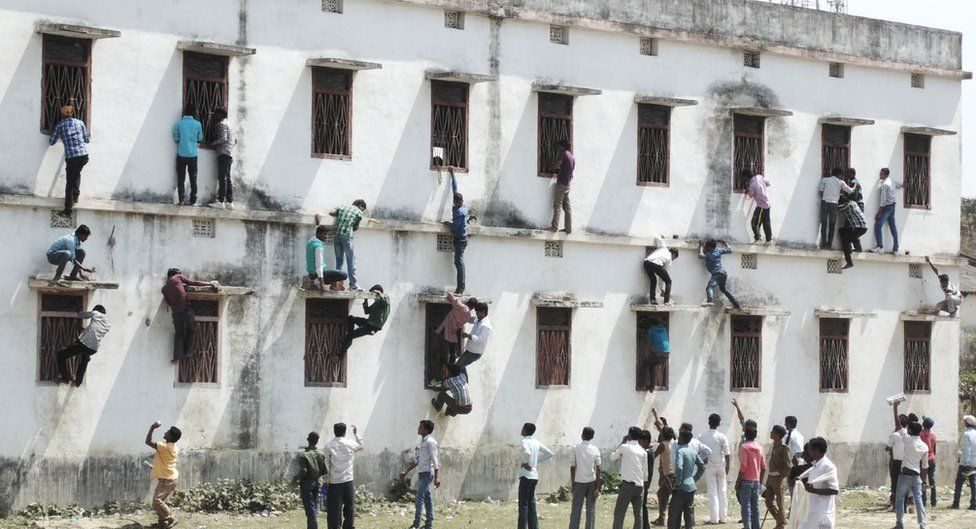5 Minutes Read
It was a genuine concern when the Madras High Court stated that only 48 out 3033 students secured a seat in government medical colleges without additional coaching.
The avouch to conduct the final year examinations by the UGC even during this perilous situation is hardly surprising. Actually, the obsession to decide merit and academic excellence based on a two hour traditional written examination is omnipresent throughout the Indian educational spectrum. The traditional examination pattern which provides an abysmal time period for the student to exhibit his merit is the litmus test of Indian academic excellence. Infact, in most of the competitive exams in the country, the students are not preparing to outshine in the subject but to tackle the examination. Studying and gaining knowledge in the requisite subject is just a secondary part of the preparation and primary is taming the examination pattern. It was a genuine concern when the Madras High Court stated that only 48 out 3033 students secured a seat in government medical colleges without additional coaching. Knowingly, it is not the rift in knowledge or intelligence which separates the students who had access to coaching and who don’t, but the regressive training provided by the coaching centres to master the examination pattern. These vigorous competitive examinations have created a fertile ground for the proliferation of coaching institutes throughout the country and distorted the selection and academic system of the country.
Evidently, the students who don’t have a flair for the stream enter into those courses and those who have a genuine interest are excluded.
There is no proper selection mechanism in the country to analyse the prowess and interest of the person and to allocate the admission accordingly. The exclusion and inclusion error are alarmingly high for the top-notch professional courses and for the limited seats of quality higher education institutes in the country. Evidently, the students who don’t have a flair for the stream enter into those courses and those who have a genuine interest are excluded. According to the Annual Employability Survey 2019 by Aspiring Minds, 80 percent of the Indian engineering graduates are not fit for the job. Still, UGC, MHRD and other selection bodies are unwilling to loosen their saddles and are childishly reluctant to bring any changes in the anachronistic education and merit deciding system.

Academics still hover around the time bound examination halls and the students focus on utilizing their verbiage more than knowledge. Laughably, it is a well known fact that even after a whole semester of partying, bunking and boozing, a few night-outs and last week rushes could make you able to throw the graduation cap. Examinations in the country is a psychological test rather than a barometer to measure the knowledge or intellectual capacity of the students. Irrespective of the reasons (psychological or physiological), those who are unable to perform during that narrow window would be tattooed as dunce even if they possess exceptional academic and subject knowledge.
Internal Marks : The Carrot and Stick
Continuous evaluation or the internal marks is the Brahmastra in the quiver of the Indian pedagogy. Frequently, it is used to make students dance according to the tune of the teacher and to intimidate the students who have a tendency to be outspoken. Unarguably, continuous evaluation is a necessary policy which is imperative for the development of academic standards. An expert committee of UGC in 2018 has suggested raising the internal or continuous evaluation marks to 80 percent of the total assessment. However, in absence of a proper supervisory mechanism to check the misuse of internal marks for nepotism and as a method to settle personal scores, the result would be counterproductive. The Kerala government is planning to slash the entire internal mark system due to such unscrupulous activities under the guise of assessment. Even with the reluctance of the UGC to accept internal marks as a proper yardstick of quality assessment for the final semester proves the pitfalls in the system.
Quality: Not in Question
Notably, the education system in the country is still in limbo about the importance of assignments, internships and projects. Currently, projects, seminars and assignments in majority institutions are nothing but a facsimile reproduction of earlier or contemporary works. It is a well known fact that a xerox shop is the best complimentary business option near an educational institution. The plagiarism and other quality checks are not properly applied against the submissions, hence ,there are neither incentives nor obligation for the students to bring either quality or uniqueness. Almost all the top-notch academic institutions in the world follow a strict and flawless pattern for such submissions and promote out of the box thinking. Even the top ranking Universities in India stutter while it comes to the production of outstanding academic outputs. The brain-drain from India is a natural consequence of the hiccups in Indian education system. According to the National Centre for Science and Engineering Statistics, India remains on top in the number of academic migrants to the USA. This is significantly affecting the development of both society and economy at a larger level.

The educational and assessment system in the country requires a total revamp. The unnecessary devotion towards a time-and space bound examination needs a thorough recheck. Higher education and selection boards in India should be more proactive and resilient in adapting changes. The world is going to change like never before. The education and assessment pattern also require a massive alteration. The hesitation for adaptation would endanger an entire generation of quality minds. This would fetter the country for at least a century.